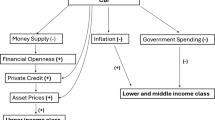Abstract
This paper summarizes the IMF advice on the ruble area as it was presented to the national authorities in Russia, the Baltic countries, and other states of the former Soviet Union in 1991-93. In the course of doing so, the paper corrects some misperceptions that have arisen about the IMF's role. The evidence presented in the paper suggests that (i) the balance of arguments on the ruble area (and national currencies) changed over time, and hence so did the IMF's advice, and (ii) from the beginning, the IMF staff concentrated on pointing out the pros and cons of alternative monetary arrangements, without strongly advocating a particular one, emphasizing that it was the authorities' decision to stay in or leave the ruble area. Fund advice on how to introduce national currencies was made readily available to the various national authorities as early as January 1992.
Similar content being viewed by others
Author information
Authors and Affiliations
Rights and permissions
About this article
Cite this article
Odling-Smee, J., Pastor, G. The IMF and the Ruble Area, 1991–93. Comp Econ Stud 44, 3–29 (2002). https://doi.org/10.1057/ces.2002.15
Published:
Issue Date:
DOI: https://doi.org/10.1057/ces.2002.15




